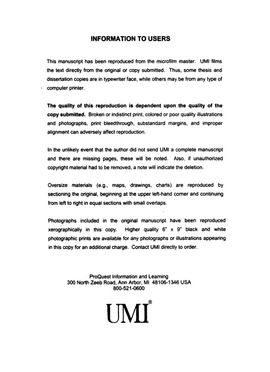| dc.contributor.advisor | Kondonassis, Alex, | en_US |
| dc.contributor.author | Khan, Saleheen M. | en_US |
| dc.date.accessioned | 2013-08-16T12:18:20Z | |
| dc.date.available | 2013-08-16T12:18:20Z | |
| dc.date.issued | 2001 | en_US |
| dc.identifier.uri | https://hdl.handle.net/11244/347 | |
| dc.description.abstract | The second chapter, "Contagious Asian Crisis: Bank Lending, Herd behavior, and Capital Inflows, " investigates two financial channels, bank lending, and capital inflows to explain the severity of the crisis. First, crises can spread across countries through common bank lending. We find that countries that share Japanese banks as their major lender with Thailand, the first victim in the Asian crisis, tend to experience currency crisis. Second, it has been argued after the Asian crisis that one of the reasons the Asian crisis became so severe was that all of those countries received huge capital inflows. After the crisis started in Thailand, investors were moving capital out of this region. This created huge capital outflows. Subsequently many Asian tigers had to devaluate their currency heavily. Some economists were quick to reason that the enormous capital inflows were the main reason for the crisis spread. We argue in this essay that it was short-term capital inflows, not total capital inflows, that were the main culprit in this episode. Long-term capital inflows such as foreign direct investment are beneficial, because they increase the productive capacity of the country and they are less volatile as well. On the other hand, short-term capital inflows are very volatile and are associated with consumption booms. Short-term flows also create inefficient investment. When a country enters into an economically tough period, very quickly short-term inflows become outflows and that brings countries to their knees. We find evidence that links short-term capital inflows to the severity of the Asian currency crisis. Finally, crises can spread through herd behavior. We investigate this issue and found that investors were in fact considering the Southeast Asian countries as one troubled region rather than rationally trying to differentiate between economies. This creates herding contagion. We compare the cross-country correlations among stock returns of Thailand, Malaysia, Indonesia, Korea, and Philippines between crisis and tranquil period to test for the existence of contagion. (Abstract shortened by UMI.) | en_US |
| dc.description.abstract | The first chapter, "Contagion Currency Crisis: Is Trade a Channel?, " presents empirical evidence that trade linkages can explain contagion above and beyond macroeconomic fundamentals. Trade variables are found to be statistically significant in explaining crises spread in both the Asian crisis of 1997--98 and Mexican peso crisis of 1994--95. We find evidence suggesting that links of trade channels to the severity of the crisis have been the same for both crises. This paper also finds evidence that China's 50% devaluation in 1994 put competitive pressure on other Asian economies' exports and, as such, slowed down their export growth. This was especially true for Thailand, the first victim of the Asian crisis, where export growth nearly collapsed. Thus, China may have been the first domino in the Asian crisis of 1997--1998. | en_US |
| dc.description.abstract | This dissertation presents evidence suggesting that trade patterns, common bank lending, herd behavior, and short term capital inflows play a role in transmitting currency crisis across countries. The dissertation is composed of two essays on contagious currency crises. | en_US |
| dc.format.extent | viii, 78 leaves : | en_US |
| dc.subject | Financial crises Southeast Asia. | en_US |
| dc.subject | Economics, Theory. | en_US |
| dc.title | Essays on international economics. | en_US |
| dc.type | Thesis | en_US |
| dc.thesis.degree | Ph.D. | en_US |
| dc.thesis.degreeDiscipline | Department of Economics | en_US |
| dc.note | Source: Dissertation Abstracts International, Volume: 62-05, Section: A, page: 1911. | en_US |
| dc.note | Major Professor: Alex Kondonassis. | en_US |
| ou.identifier | (UMI)AAI3014526 | en_US |
| ou.group | College of Arts and Sciences::Department of Economics | |
